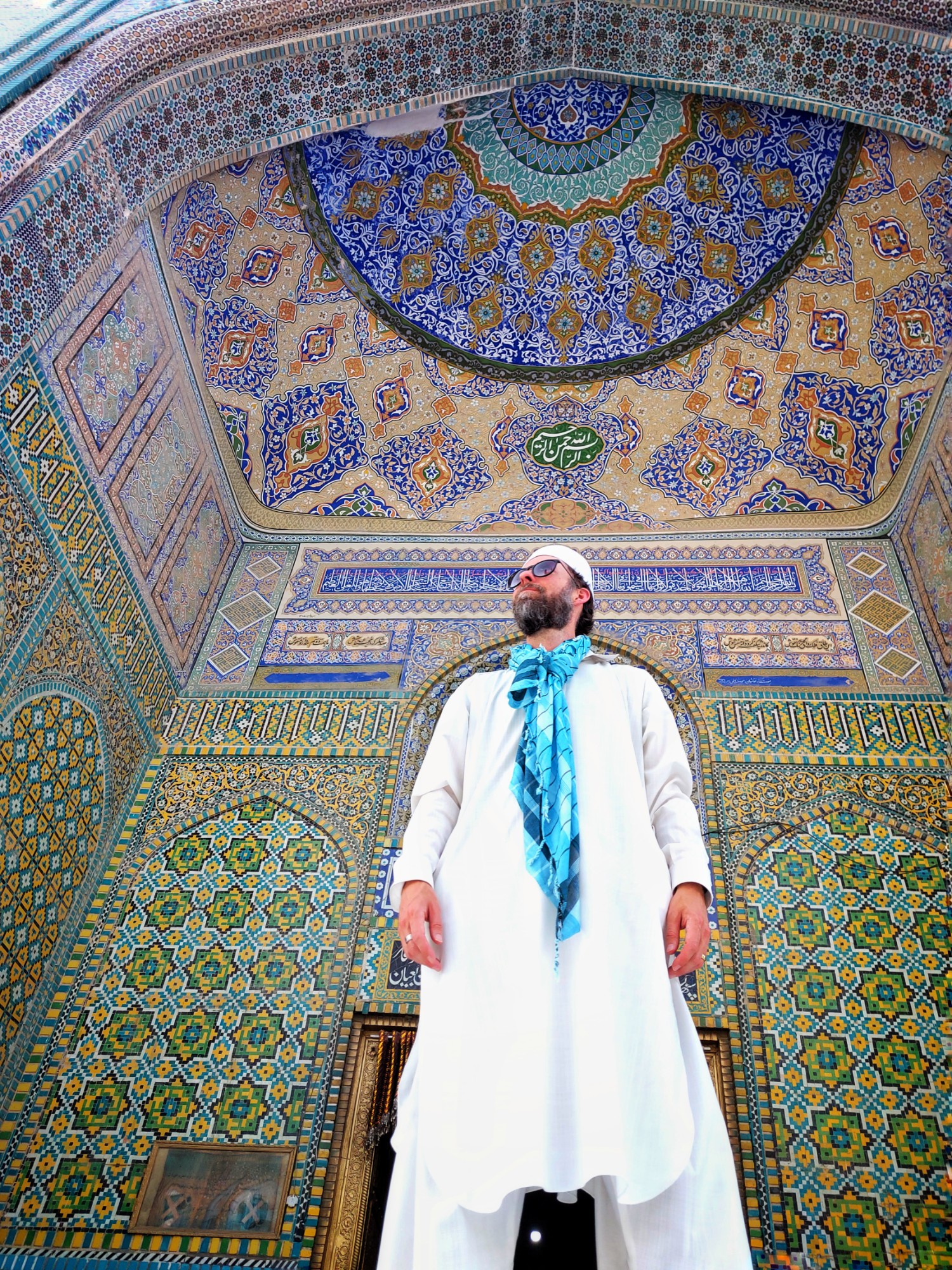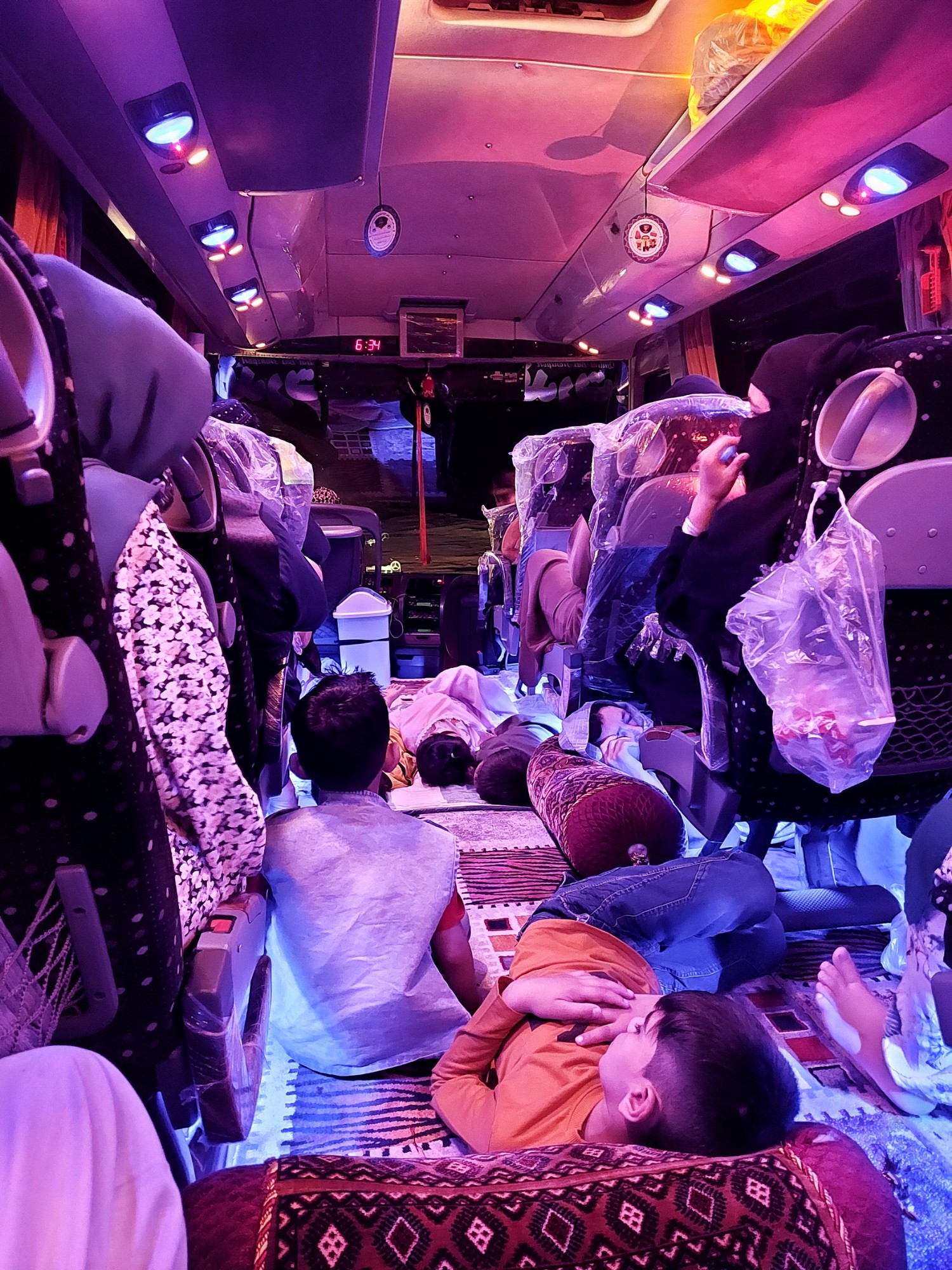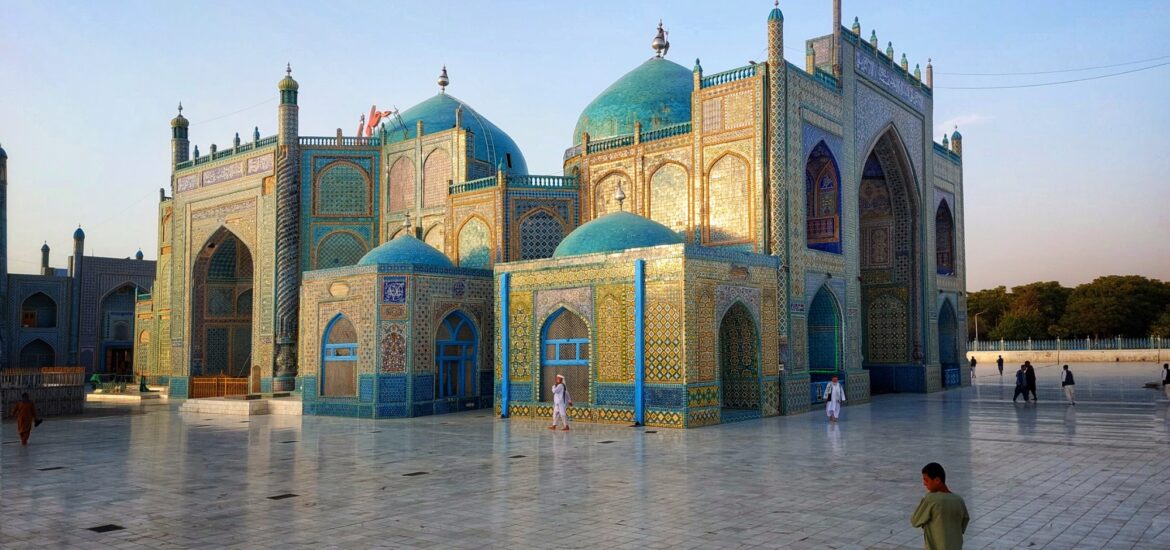Mazar – i – Sharif
Mazar is an ancient city of over 500,000 inhabitants known for the magnificent and expansive blue mosque complex The cities name translates to “tomb of the saint” which is a reference to the tomb of Ali, the famed cousin, son-in-law and companion of the Islamic prophet Muhammad. Miraculously, the mosque and city were spared the devastation that occurred in many of the country’s major cities during the Soviet–Afghan War and subsequent civil wars. On 14 August 2021, Mazar-i-Sharif was seized by the ‘Tali’ becoming the 25th major city captured as part of the wider 2021 Taliban offensive.
We arrived in Mazar i Sharif late in the night after a long drive from the Afghanistan – Tajikistan border. Our first stop was clothes shopping. Clothes shopping was the first priority? I was still wearing western clothes and was getting lots of unwanted attention and stares which is something you don’t want in Afghanistan. Imagine how someone would stick out in the USA walking around in Afghani clothing, same same. Because our border crossing had taken forever, all the shops in Kunduz were closed and because I was in western clothes all the Taliban checkpoints took forever, and the negative feedback loop continued.

After suiting up – Afghan syle, we were ready for our second stop – Visiting the Ministry of Information and Culture for Permit registration. This is required on arrival in every region in Afghanistan. Inside the Mazar permit office as we waited to register I noticed a desk with USA + Afghan flag sticker on it. It was right in front of me as I waited almost 45 min for my permit to be approved.

At one point the stress and boredom culminated and I asked the Taliban about the USA sticker and their response was, “yeah, the Americans brought it here from the USA 20 years ago.” oh…right. Everyone laughed in an embarrassed sort of chuckle.

The centuries old blue mosque is the highlight of Mazar. A local legend claims that the entire mosque was once buried for protection, hidden under an earthen embankment during the invasion of Genghis Khan around 1220. Sunni Muslims believe the mosque contains the tomb of ʿAlī ibn Abī Ṭālib, their fourth Rightly Guided Caliph. The mosque is a beautiful oasis of calm surrounded by the chaotic central market. I was lucky to be there in time for the evening call to prayer which was magical to witness.

Outside Mazar we were visiting another mosque when some heavily armed Taliban soldiers arrived on motorcycles. They wanted to speak with me, which sometimes can be a bit scary because there is a fine line between someone’s curiosity and suspicion. Fortunately they were friendly and, surprisingly, wanted me to take their photo on their bike. The photos were funny, and we were soon joking, taking photos with each other on the motorbikes acting all tough. Eventually we went for a short ride around a small village a couple hours outside the city of Mazar-i-Sharif.

The Taliban now control the country of Afghanistan, and I have passed through roughly ~ 250 checkpoints manned by them during my travels here. These checkpoints are some of the most chilling, dangerous experiences because they dont speak English, and often cant read my travel permits in their own Pashto language, but they know what USA looks like. Being thrown in jail and forgotten about is a real concern, and ~ 4 Americans are currently missing or in jail following checkpoints gone wrong. Taliban are big men, always heavily armed and taking pictures of them is a huge no no unless they ask of course.
Balkh
An hour’s drive from Mazar, Balk is a very chill place to visit with lots to see. Balk is famous for its ancient city walls, and its green mosque – both in ruins. It has a history that dates back to the Early Iron Age, around 1500 BC The Iranians built their first kingdom in Balk and afterwards the Parthian Empire established its capital here. There is an ancient temple which was rumored to be so rich it invited plunder, and Alexander the Great killed the king of Balk and married Roxana as he sought these riches.

Today the city is in ruins, as well as the fabled green mosque – which you can still relax inside as you escape from the heat. Inside you will find many people sleeping on the cool floor.We visited the ancient green mosque. It was a hot day so we laid inside where it was cool. People were just sleeping on the floor inside the mosque. Nearby there were watermelon sellers who were fun to interact with. I don’t know if it was watermelon season, but there are SO many watermelons for sale everywhere in Afghanistan. Piles and piles of them everywhere. Truckloads full of watermelons.

Leaving the green mosque and hundreds of watermelons we had homemade Afghanistan ice-cream in central Balkh. It’s a whole process and you sit down as they create it for you. I can’t describe the flavor precisely but it was pretty good. The Aghanis were very proud of their locally made ice cream and seemed happy I enjoyed it. The taxi driver thought I should make a video, and transformed into a movie director: conducting the waiter to bring us the ice cream, doing a couple of takes to make sure I got the shot right. Hilarious 😀

Kuchi Tribes
Nearby we tried to visit the 9th-century Haji Piyada Mosque but we couldn’t go inside because it was dangerous. The area around the Mosque is pleasant, and we hung out for a bit. Outside of Balk our taxi driver stopped for what he thought would be a nice photo with several children and their sheep. These girls were young members of an almost extinct nomadic group called the Kuchi, whose tribes have pursued a migratory life herding livestock for centuries, supplying famous Afghan staples from kebabs to carpets. Their colorful clothes and black tents are an iconic symbol of Afghanistan. Three decades of conflict have left the Kuchis extremely vulnerable, unable to claim the protection of local commanders as they wander a fragmented country over difficult terrain, where harsh deserts and soaring mountains are threaded with narrow green valleys of farmland. The arid environment of Afghanistan struggles to support grazing animals for more than a few days, making it impossible to raise livestock in one location. Because movement is difficult and unsafe, many Kuchi are now forced to adopt a more sedentary life of farming. In the field nearby we met an incredibly nice Kuchi farmer who was preparing for the harvest.

Mazar – Kabul Night bus
Mazar – Kabul via night bus. After sunset we had dinner and our driver took us to the bus station far outside the city. We bought snacks in the nearby market and boarded a nice bus from Germany that still had the old DE license plates on the front. The VIP buses are full of families with alot of space, children sleep on the floor. Cushions are provided for them to rest. It’s a 10 hr drive through amazingly beautiful mountains and streams, with some crazy driving, and off roading for hours. At one point there is a 15 minute journey on a dirt tunnel through the mountain.



Did you ride in any rickshaws in MEZ? We’re hearing only the TB can operate rickshaws in the city. Any truth to that?
yes, had no problems riding Tuk Tuks in Afghanistan.